Zac1 functions through TGFbetaII to negatively regulate cell number in the developing retina
- PMID: 17559664
- PMCID: PMC1913510
- DOI: 10.1186/1749-8104-2-11
Zac1 functions through TGFbetaII to negatively regulate cell number in the developing retina
Abstract
Background: Organs are programmed to acquire a particular size during development, but the regulatory mechanisms that dictate when dividing progenitor cells should permanently exit the cell cycle and stop producing additional daughter cells are poorly understood. In differentiated tissues, tumor suppressor genes maintain a constant cell number and intact tissue architecture by controlling proliferation, apoptosis and cell dispersal. Here we report a similar role for two tumor suppressor genes, the Zac1 zinc finger transcription factor and that encoding the cytokine TGFbetaII, in the developing retina.
Results: Using loss and gain-of-function approaches, we show that Zac1 is an essential negative regulator of retinal size. Zac1 mutants develop hypercellular retinae due to increased progenitor cell proliferation and reduced apoptosis at late developmental stages. Consequently, supernumerary rod photoreceptors and amacrine cells are generated, the latter of which form an ectopic cellular layer, while other retinal cells are present in their normal number and location. Strikingly, Zac1 functions as a direct negative regulator of a rod fate, while acting cell non-autonomously to modulate amacrine cell number. We implicate TGFbetaII, another tumor suppressor and cytokine, as a Zac1-dependent amacrine cell negative feedback signal. TGFbetaII and phospho-Smad2/3, its downstream effector, are expressed at reduced levels in Zac1 mutant retinae, and exogenous TGFbetaII relieves the mutant amacrine cell phenotype. Moreover, treatment of wild-type retinae with a soluble TGFbeta inhibitor and TGFbeta receptor II (TGFbetaRII) conditional mutants generate excess amacrine cells, phenocopying the Zac1 mutant phenotype.
Conclusion: We show here that Zac1 has an essential role in cell number control during retinal development, akin to its role in tumor surveillance in mature tissues. Furthermore, we demonstrate that Zac1 employs a novel cell non-autonomous strategy to regulate amacrine cell number, acting in cooperation with a second tumor suppressor gene, TGFbetaII, through a negative feedback pathway. This raises the intriguing possibility that tumorigenicity may also be associated with the loss of feedback inhibition in mature tissues.
Figures

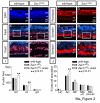
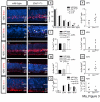
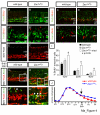
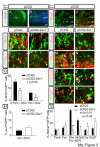
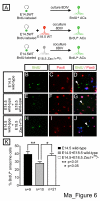

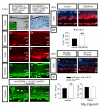

Similar articles
-
Zac1 promotes a Müller glial cell fate and interferes with retinal ganglion cell differentiation in Xenopus retina.Dev Dyn. 2007 Jan;236(1):192-202. doi: 10.1002/dvdy.21002. Dev Dyn. 2007. PMID: 17072860
-
Zac1 is expressed in progenitor/stem cells of the neuroectoderm and mesoderm during embryogenesis: differential phenotype of the Zac1-expressing cells during development.Dev Dyn. 2005 Jun;233(2):667-79. doi: 10.1002/dvdy.20373. Dev Dyn. 2005. PMID: 15844099
-
Molecular heterogeneity of developing retinal ganglion and amacrine cells revealed through single cell gene expression profiling.J Comp Neurol. 2007 Jun 20;502(6):1047-65. doi: 10.1002/cne.21368. J Comp Neurol. 2007. PMID: 17444492
-
ZAC1 target genes and pituitary tumorigenesis.Mol Cell Endocrinol. 2010 Sep 15;326(1-2):60-5. doi: 10.1016/j.mce.2010.01.033. Epub 2010 Feb 1. Mol Cell Endocrinol. 2010. PMID: 20117169 Review.
-
Control of cell proliferation by neurotransmitters in the developing vertebrate retina.Brain Res. 2008 Feb 4;1192:37-60. doi: 10.1016/j.brainres.2007.04.076. Epub 2007 May 6. Brain Res. 2008. PMID: 17597590 Review.
Cited by
-
β1-Integrin Deletion From the Lens Activates Cellular Stress Responses Leading to Apoptosis and Fibrosis.Invest Ophthalmol Vis Sci. 2017 Aug 1;58(10):3896-3922. doi: 10.1167/iovs.17-21721. Invest Ophthalmol Vis Sci. 2017. PMID: 28763805 Free PMC article.
-
Plag1 and Plagl2 have overlapping and distinct functions in telencephalic development.Biol Open. 2018 Nov 26;7(11):bio038661. doi: 10.1242/bio.038661. Biol Open. 2018. PMID: 30361413 Free PMC article.
-
Quantitative Approaches to Study Retinal Neurogenesis.Biomedicines. 2021 Sep 14;9(9):1222. doi: 10.3390/biomedicines9091222. Biomedicines. 2021. PMID: 34572408 Free PMC article. Review.
-
A novel mouse model of anterior segment dysgenesis (ASD): conditional deletion of Tsc1 disrupts ciliary body and iris development.Dis Model Mech. 2017 Mar 1;10(3):245-257. doi: 10.1242/dmm.028605. Dis Model Mech. 2017. PMID: 28250050 Free PMC article.
-
TGF-β signaling protects retinal neurons from programmed cell death during the development of the mammalian eye.J Neurosci. 2013 Aug 28;33(35):14246-58. doi: 10.1523/JNEUROSCI.0991-13.2013. J Neurosci. 2013. PMID: 23986258 Free PMC article.
References
Publication types
MeSH terms
Substances
LinkOut - more resources
Full Text Sources
Molecular Biology Databases

